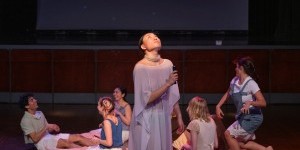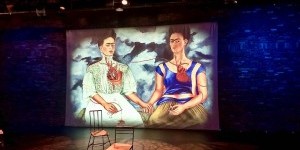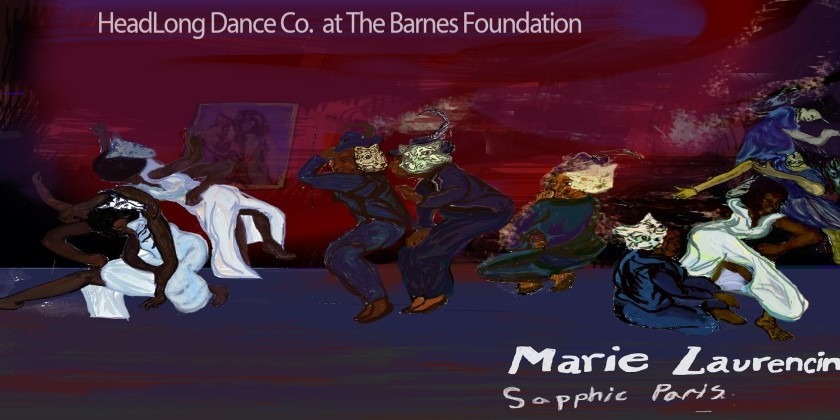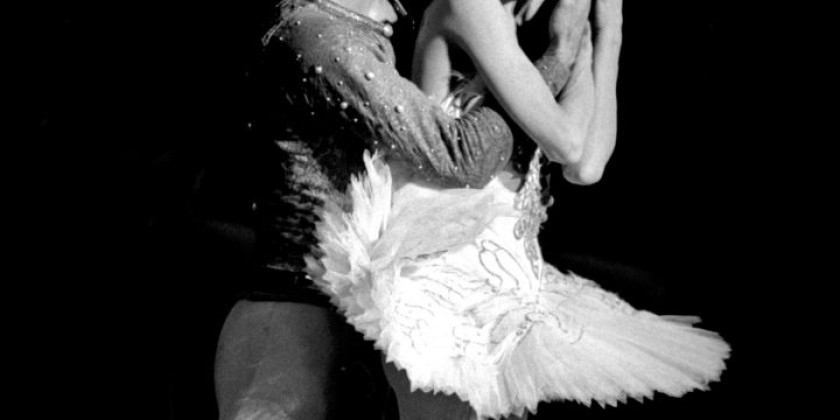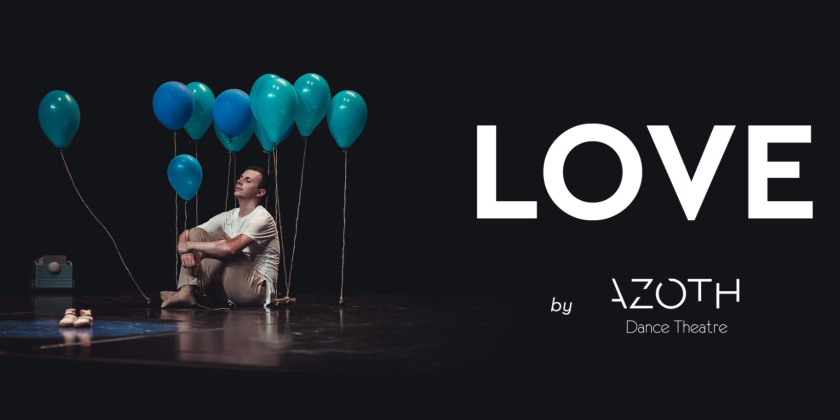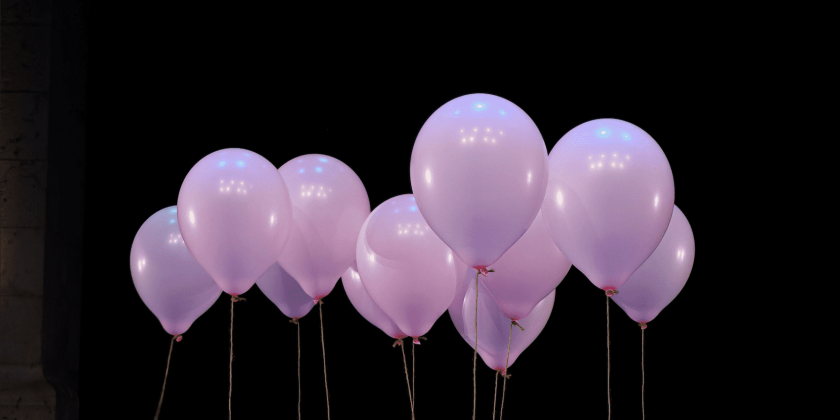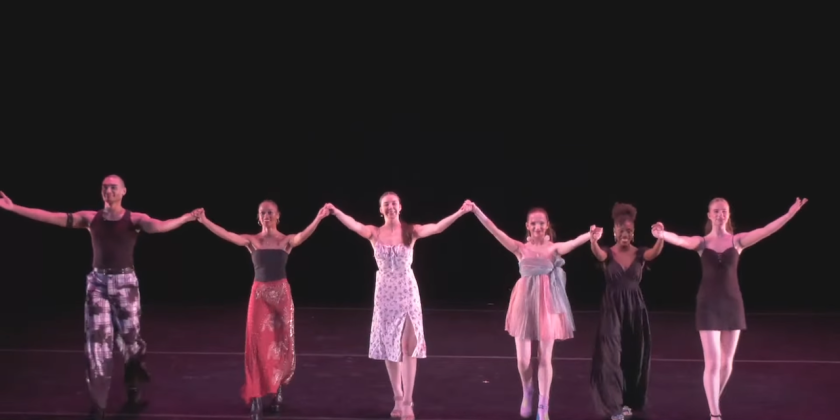AUDIENCE REVIEW: Felipe Escalante creates “Border of Lights” for Tabula Rasa Dance Theater
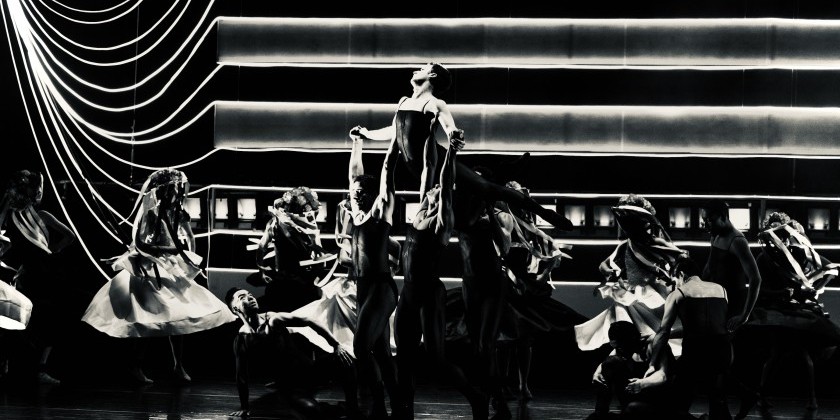
Company:
Tabula Rasa Dance Theater
Performance Date:
June 15, 2023
Freeform Review:
BORDER OF LIGHTS
- FELIPE ESCALANTE - Artistic Director and Choreographer
- DECO DELOREAN- Sound Designer
- CHRISTOPHER ANNAS-LEE -Lighting and Scenic Designer
- PAUL DZIEL-Projection Designer
- STEVEN JOHNSON -Associate Designer
Music Wolfgang Amadeus Mozart - Requiem in D minor, K. 626
After waiting nine months to inaugurate its new season, Tabula Rasa Dance Theater presented the highly anticipated world premiere of Border of Lights, addressing the immigration crisis and xenophobia. While the piece was germinating, the subject matter grew more urgent, and the talents of artistic director Felipe Escalante ripened. This maturation was evident during the two nights of the performance, both in Escalante’s own dancing and in his choreography.
Especially given the ambitious scale and scope of Border of Lights, Escalante showed an unusual humility during his appearances on stage. He frequently placed himself in the background of his 20-person company (though even there he was clearly its driving force). By the end of the piece, he was literally humiliated, reduced to slithering on the ground, eyes wide with fear, while other performers circled his prone body and spit on him.
In this scene, and others, he unified an eclectic group of dancers—a result, no doubt, of rigorous rehearsing. Though they varied widely in age, experience, ability, physique, nationality, and backgrounds, they formed a synchronized, communal entity. For Tabula Rasa Dance Theater, diversity, equity, and inclusion, are not afterthoughts, but part of the company’s DNA.
Not one to shy away from a challenge, Escalante audaciously took on Mozart’s Requiem in D Minor—the most important piece of music in the western world—as his score. The choreography's consummate musicality allowed audiences to hear the composition with fresh ears, and to observe the movement of bodies with sharpened eyes. When Escalante occasionally inserted electronic music into the score, the interruptions were so seamless they were nearly subliminal. As the subject of Border of Lights is immigration, the death memorialized by the requiem mass alluded not just to the end of life and the departure of a soul, but, metaphorically, to the loss of country, culture, humanity, and home. Not one note was wasted; even those passages during which a dancer was dressing on stage, back turned, or shuffling away a discarded garment, were tiny tours de force.
Christopher Annas-Lee's supremely sophisticated lighting design included a mutable illuminated backdrop broken into flag-like horizontal stripes, and luminous whiplashes streaking around a metal cage imprisoning a cowering dancer. All of his elegant optic effects contributed significantly to the atmosphere of hope, sorrow, and defeat. By the time the scenery switched to a monumental elegiac wall bristling with variegated ribbons (inspired by the prayer ribbons tied to the Korean border fence), the movement onstage had transmuted into pure memory and feeling.
As in his last piece, Oedipus Rex, Escalante ingeniously incorporated state-of-the art technology into the work. This time he introduced a drone, which functioned first as the jeweled crown of a despot (another “Rex”) and shortly after as a buzzing police helicopter terrorizing a frantic, scampering man, who nearly jumped out of his skin as he made his exit.
Also noteworthy was the use of the orchestra pit as an extension of the stage. It served at various points as a hellish realm from which arms thrust out, sometimes holding flowers; as an underground site for archaeological excavations and common graves; and as a perilous border wall over which dancers hoisted one another.
Tabula Rasa Dance Theater just might be the future of dance. Escalante’s work is neither derivative nor imitative. For that reason, the company more than lives up to its name. Escalante starts with a blank slate, untainted by influence. After the standing ovation, the audience lingered in the theater, stunned. They had just experienced a rarity in art: the shock of the new.
Author:
Sylvia Susskind
Website:
www.tabularasadancetheater.com
Photo Credit:
Paula Lobo






